When purchasing maidenhair, you should not expect that its care will be minimal. In order for a plant to please with emerald foliage at home, it is necessary to carefully prepare the place and conditions for the new flower.
Description of the plant
Adiantum venereal hair - a bright representative of perennial indoor ferns.The genus of ferns to which it belongs belongs to the Pteris family and includes about 200 species.
In adiantum, the rhizomes are located in the upper layers of the soil cover. Their surface is covered with brown or black scales.
Leaves are alternate or opposite. The leaf blade is wide, smooth, green or with a bluish bloom, pinnately complex. It consists of segments, oval, trapezoidal or wedge-shaped, which depends on the type of plant. The leaf petioles are dark and also have scales at the base. The variety of leaves is well demonstrated by photographs.
Round, oblong or elongated spores are located along the veins on the underside of the leaves and are covered with brown films.
But the common original characteristic of adiantums is the water-repellent ability of the foliage. Drops of water flow from the leaves and are not absorbed into their surface.
In Russia, the two most common types of adiantums are: lady's hair and stop-shaped.
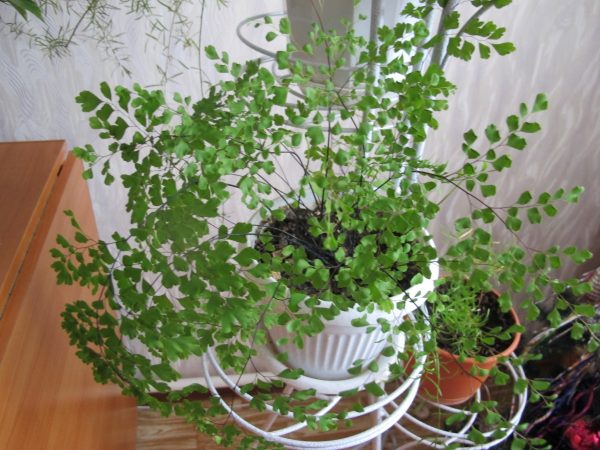
Venus hair
Photo of adiantum venereal hair
Adiantum Venus hair, growing in the North Caucasus, in the mountains of Crimea, and outside Russia - in America, Asia and Africa, is very popular as a decoration for office and residential premises.
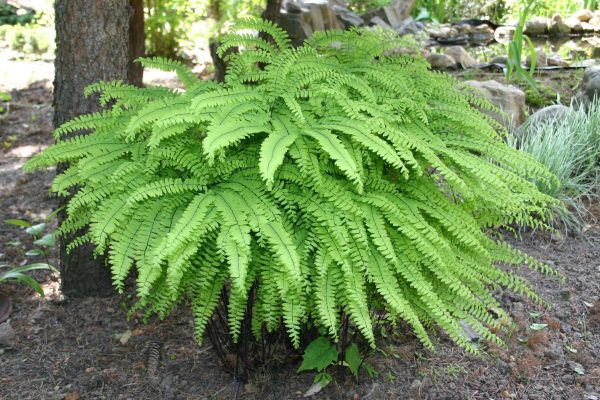
Adiantum stopiform
Photo of adiantum stopoid
Adiantum stopiform within Russia it grows wild in the Far East. Found in deciduous and mixed forests. Widely used as a garden ornamental plant, it is also popular in the decoration of offices and apartments.
Frost-resistant, can withstand temperatures down to -35°C. The height of the maidenhair adiantum reaches up to 60 cm. This species independently reproduces by spores and with the help of creeping rhizomes.
Planting a flower
Under natural conditions, adiantum grows along the rocky banks of mountain rivers and streams, among rocky ledges and rocks at the foot of waterfalls on fertile, moist and well-drained soil. Therefore, when growing a flower at home, you need to choose a soil with a similar composition.
The container for maidenhair should not be deep. The presence of superficial rhizomes requires their location in a container that provides enough space for root growth. A prerequisite for caring for Venus hair is the presence of drainage at the bottom of the pot in the form of expanded clay, the middle fraction.
The soil mixture for ferns needs to be light, nutritious, and slightly acidic. An indispensable requirement for the substrate is looseness, nutritional value and breathability. Therefore, to independently prepare the soil at home, use turf or leaf soil, humus or vermicompost, peat, and river sand.
It is useful to add crushed pine bark to the composition, which makes the soil loose, well permeable to water and air. You can use commercial soil for ferns. Sphagnum moss is added to retain moisture, and charcoal is used as an antiseptic.
When planting and growing Venus hair in a room, it is important to ensure that the root collar does not sink into the ground. Otherwise, decay is inevitable.
Features of caring for Venus hair
The plant is demanding on the composition of the air, so it will not grow in a smoky room or in a kitchen with a gas stove. The room where the adiantum is located must be regularly ventilated. In summer, the plant will be comfortable in the garden under the shade of trees, as in the photo.
Lighting
Adiantum is a shade-loving plant and does not tolerate direct sunlight. In the sun, fern foliage loses its brightness, becomes faded, turns yellow and withers. The best place to grow Venus hair indoors is partial shade.
The flower loves space, so it can be placed indoors. It is advisable to decide on the location of the fern right away, since it does not like to be moved. It takes a long time to get used to new conditions, which affects the growth rate.
Temperature
When caring for ferns indoors, it is necessary to maintain an ambient temperature close to natural conditions. The optimal temperature should be +22°…+26 °C. When the plant enters the dormant stage, the ambient temperature should be +15°...+22°C.
If the temperature regime is disturbed, the fern will react to this by yellowing the foliage, the appearance of dark spots on it, or the development of rot on the stems and underground parts of the plant.
Drafts and hot air flows from heating devices have a negative effect on the condition of the flower. At the first signs of exposure to adverse factors, the plant must be trimmed to ground level.
Humidity
Based on the natural preferences of ferns, the optimal air humidity can be considered a level of 60–70%.To avoid drying out of the leaves due to the high dryness of the air in the room, when caring for adiantum, it is necessary to artificially humidify the air around the plant.
The easiest way to do this is to place a tray with wet expanded clay next to it. Venus hair can be sprayed with warm water, preventing excess moisture from getting into the soil.
Watering
Caring for Venus hair at home involves proper watering. The fern is intolerant to drying out of the earthen coma, but increased soil moisture is also destructive for the adiantum.
In unfavorable conditions and with improper care, the crop sheds most of its leaves and takes a long time to recover.
Therefore, when caring for a flower indoors, it is necessary to organize regular but moderate watering. Between procedures, the top layer of the substrate should have time to dry.
There are two aspects to the correct watering regime: regularity and moderation. Venus hair is watered with settled or filtered water. Rainwater or aquarium water will also work. This will preserve the attractive appearance of the flower.
During the period when the fern is actively forming new leaves and growing, the amount of watering increases to 2-3 times a week with a moderate amount of water.
During dormancy, from mid-autumn to spring, the watering regime is once every 7-10 days. The method of immersing the pot in water for 10-15 minutes is an effective way to moisten the substrate. After the procedure, be sure to allow the remaining water to drain.
Feeding
Watering is usually combined with fertilizing. Adiantums grown in apartments do not tolerate fertilizing in high concentrations, so all fertilizers must be used in half the dose.
The compositions used should not contain lime.The frequency of fertilizing during the growing season is once every 3-4 weeks; in winter there is no need for fertilizing.
Transfer
Indoor adiantums are transplanted in the spring, before the active growing season begins. The pot is increased in volume by only 1-2 cm, taking into account the slow-growing roots.
Young specimens are replanted every year, and adult plants only when the roots fill the entire earthen ball. Often this procedure is combined with dividing the plant.
How does the adiantum venereal hair reproduce?
Venus hair can be propagated in two ways: by dividing the rhizome and by spores.
Rhizome division
Propagation by dividing the mother plant helps renew an overgrown plant. This is a quick way to get new plants.
The fern is removed from the pot, the rhizome is cleaned of dry and old fragments. The rhizome is divided into parts with a sharp and sterile knife. Each part of the root must have a bud with leaves.
The cut area is sprinkled with crushed activated carbon. Each seedling is planted in separate pots, after holding them in a root former solution. The seedlings are provided with optimal conditions by placing them in a warm, humid room or greenhouse, shaded from direct sunlight.
Important! If there are not enough growth points, then it is better to refuse to divide the plant.
Fern reproduction by spores
Reproduction by spores is a longer-term method. But it has positive sides. From the spores you can get a larger number of plants that will be adapted to the environment.
Spores are collected from the underside of leaves, choosing the largest ones. The spores should then be dried for 7-14 days. Dried seeds are distributed evenly over the surface of sterile soil.
But this is not enough for successful fern growing.Seeds will not germinate without providing an optimal microclimate. You need bottom heating, a temperature above +22°C, constant high humidity and minimal lighting. The top of the container with seedlings must be covered with film or glass.
Important! The presence of a mini greenhouse requires organizing regular ventilation.
The first shoots can be expected after 3-5 weeks, but in some cases this process takes up to 3 months. The film is removed only after the shoots appear. And the container is moved to a lit place.
The seedlings must be thinned out, leaving the largest and healthiest specimens with a distance of 3-4 cm between them. A month after picking, the seedlings are ready for transplanting into individual pots.
Diseases, pests
The leaves of the flower contain substances that repel insects. But violating the rules of home care provokes damage by spider mites, scale insects, and aphids. You can't see them in the photo, they're too small. Externally, their activity is manifested by the curling and falling of leaves, the appearance of a sticky coating and cobwebs.
They are combated traditionally - with insecticides (Inta-vir, Fitoverm, Aktellik, Aktara), although the plant can react to the effects of chemicals by dropping leaves. Therefore, you should not neglect folk remedies. Treatment with a soap solution works best against many pests.
Viral diseases are difficult to treat, so plants with reddened leaves around the edges will have to be destroyed and neighboring flowers treated with insecticides.
The procedure must be repeated every week.
Possible problems when caring for the plant
- The leaves turn pale, become transparent with brown spots, brittle and dry - a common situation if, when caring for the fern, the air humidity is not maintained within 60-70%.
Solution: place the pot on a tray with wet expanded clay or pebbles, spray the adiantum with a sprayer. - The leaves of the hair venus look dry, their edges curl inward. In this case, the problem is low temperature and excessive watering; there is a high probability of root rotting.
Solution: you need to increase the temperature in the room to 22-26 with moderate watering. - Discolored dry leaves indicate exposure to direct sunlight.
Solution: transfer the flower to a shaded place. - The leaves wither after transplantation - expected stress, after which the plant takes a long time to recover; at first it looks lifeless.
Solution: provide comfortable humidity and temperature. It is useful to treat the plant with a freshly prepared biostimulant solution. A solution of succinic acid on a leaf is effective. It will help the adiantum survive a stressful situation, as it activates vital processes and root growth.
Beneficial features
Maidenhairs have been used since ancient times as antipyretic, antiparasitic, sedative and anti-inflammatory agents. The leaves contain active substances and essential oils.
In medicine, the adiantum Venus hair is most often used. At different times and in different countries it was used to treat baldness, jaundice, urolithiasis and fever.
A decoction of the leaves of the plant treats alcoholism and tobacco addiction.
Nowadays, in the Caucasus and Western Europe, the infusion of the plant is used to rinse hair, thereby giving it shine.
Important! For people suffering from allergies, maidenhair may not be safe, as it is an allergen.
Signs associated with the flower
Folk signs have not ignored Venus's hair. It is believed that indoor ferns protect the home from evil spirits, calm their owners and extinguish conflicts.
Other indoor flowers:
- Growing adenium obese
- If you decide to get an aglaonema
- Maple on the windowsill
- How to care for Brugmansia
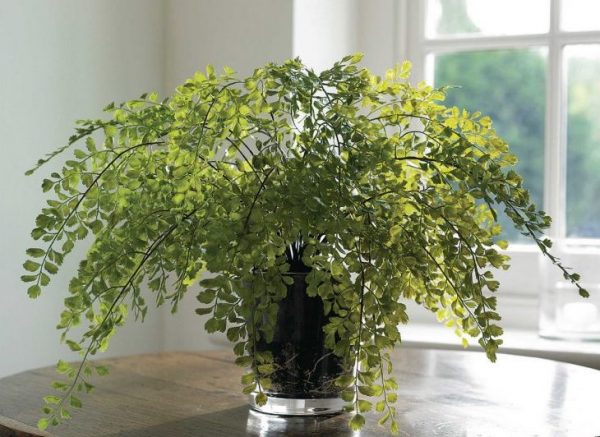
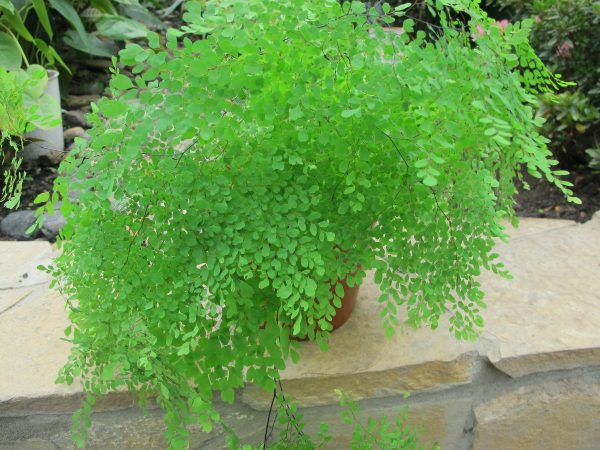
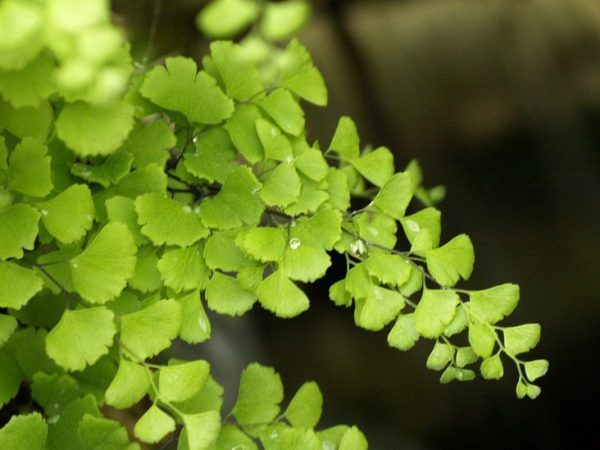
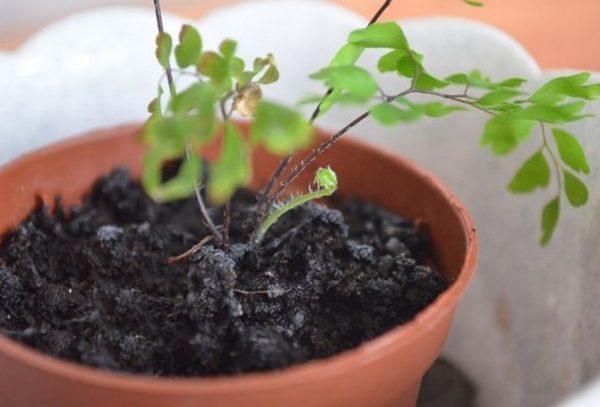
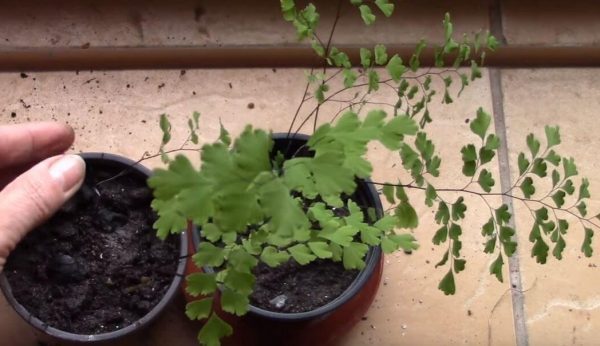
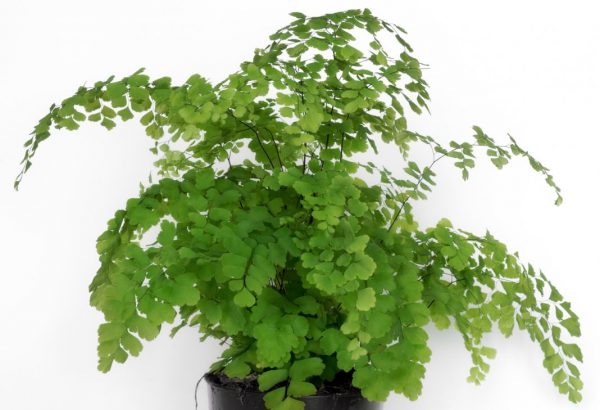


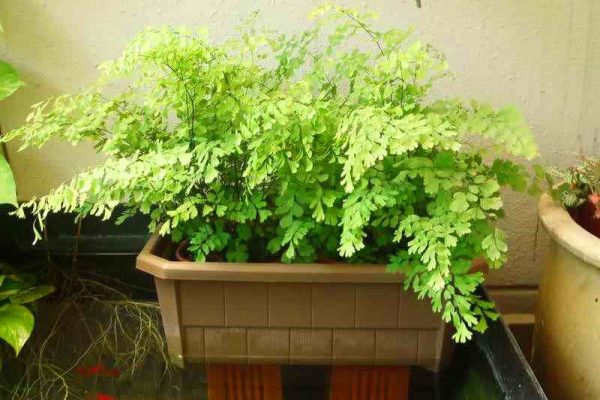

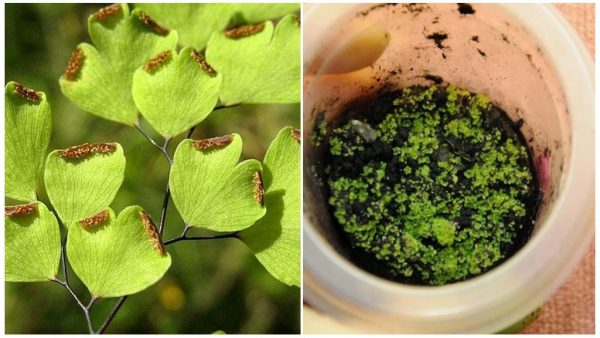
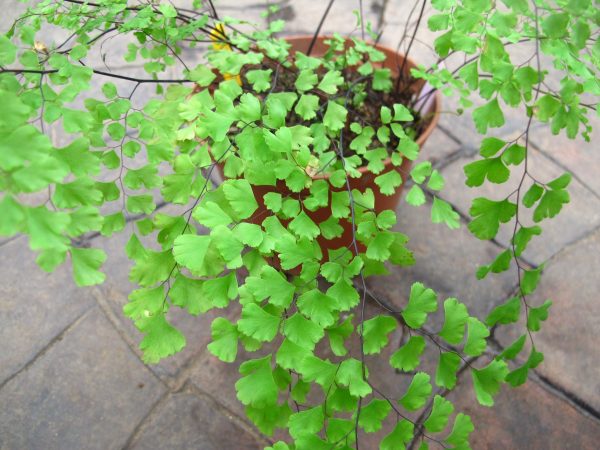
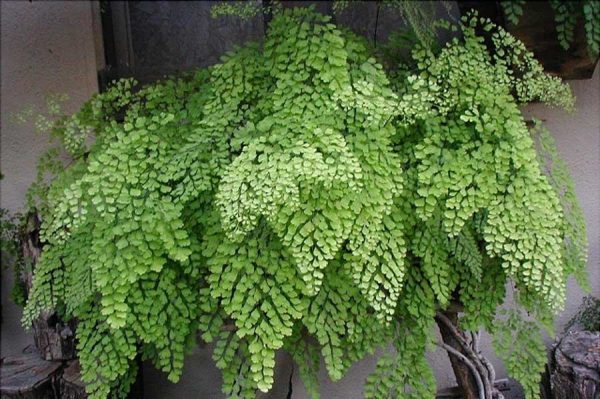

 CUCUMBERS NEVER GET SICK, I'VE BEEN USING ONLY THIS FOR 40 YEARS! I SHARE A SECRET WITH YOU, CUCUMBERS ARE LIKE THE PICTURE!
CUCUMBERS NEVER GET SICK, I'VE BEEN USING ONLY THIS FOR 40 YEARS! I SHARE A SECRET WITH YOU, CUCUMBERS ARE LIKE THE PICTURE! You can dig a bucket of potatoes from each bush. Do you think these are fairy tales? Watch the video
You can dig a bucket of potatoes from each bush. Do you think these are fairy tales? Watch the video
 How our fellow gardeners work in Korea. There is a lot to learn and just fun to watch.
How our fellow gardeners work in Korea. There is a lot to learn and just fun to watch. Eye trainer. The author claims that with daily viewing, vision is restored. They don't charge money for views.
Eye trainer. The author claims that with daily viewing, vision is restored. They don't charge money for views. A 3-ingredient cake recipe in 30 minutes is better than Napoleon. Simple and very tasty.
A 3-ingredient cake recipe in 30 minutes is better than Napoleon. Simple and very tasty. Therapeutic exercises for cervical osteochondrosis. A complete set of exercises.
Therapeutic exercises for cervical osteochondrosis. A complete set of exercises. Which indoor plants match your zodiac sign?
Which indoor plants match your zodiac sign? What about them? Excursion to German dachas.
What about them? Excursion to German dachas.